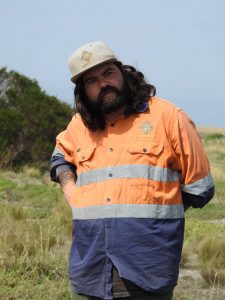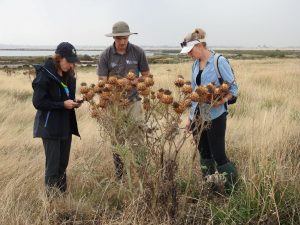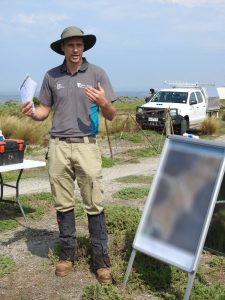Back in October 2020, Chase Aghan – Project Officer (Forest, Fire and Parks) for Wadawurrung Traditional Owners Aboriginal Corporation and Dr Brad Farmilo – Senior Scientist & Plant ecologist, Arthur Rylah Institute for Environmental Research (DELWP) presented at the State-Wide Integrated Flora and Fauna Teams (SWIFFT) seminars series on native grasslands.
They used the work we are doing for Program 3 (Protecting Cultural Heritage) at Point Lillias as a case study example of combining Traditional and Western knowledge to better achieve conservation and restoration outcomes.



Key Summary Points:
- Prior to European settlement, grasslands were looked after for thousands of years by First Nations people.
- There is a relationship with the spiritual, social, and physical perceptions for survival and knowledge of Country. Landscapes are living and breathing, and part of Indigenous people’s well-being.
- By respectfully engaging Traditional and Western approaches in projects, the outcomes will far exceed what could have otherwise been achieved.
You can read through the detailed meeting notes here.
OR you can watch the whole talk on Youtube through this video link.
